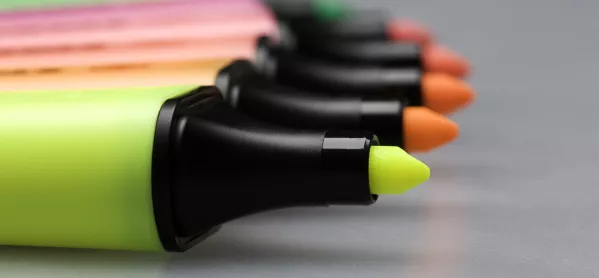“Miss, what colour pen do I need to use?”
“Miss, why have you underlined this word?”
“Sir, I’ve already done one quotation. Why do you want another?”
It is good practice to make time in lessons for students to read and respond to your feedback. Yet, feedback sessions always seem to be like this: a thousand questions that you must have answered a thousand times before, leaving you exhausted and frustrated at the end of the lesson.
You’ve worded every piece of feedback in the simplest way imaginable; you’ve pre-taught any common misconceptions before handing back the books; students are familiar with school marking codes because they see them in every subject; and you’ve even kindly handed out a green pen to every student, reiterating over and over again that the school policy asks students to respond in green.
So why is it that these feedback lessons never seem to go to plan? In my experience, it usually comes down to one of two issues.
Problem 1
Students do not understand the purpose or importance of the feedback
Some students do not see value in using feedback to improve their work because they already believe that they met a certain standard when they completed the original work. For example, if I ask Jamie to complete a description of an image in 45 minutes and he does so, using each item from the success criteria that I gave him, he is unlikely to believe that he can do much more to progress and may be reluctant to spend any more time on the task.
The solution?
This is where we need to teach our students the value of revisiting work that we have completed in the past and looking at it with fresh eyes. The opportunity to excel is within students’ grasp if they are able to see the purpose of activities such as this; after all, an author doesn’t draft a chapter of a book and never glance upon it again. A simple statement at the start of the feedback lesson, explaining the reasoning behind the feedback and acting on it could make all the difference to students’ attitudes.
Problem 2
The feedback given is too complex
Occasionally, when you’re marking books, it can feel like there are 30 different needs in the class - which there are, in a way. But, providing personalised feedback for each student is complex and time-consuming, and will ultimately result in 30 different questions being fired at you as soon as students open their books, leaving you feeling unnecessarily drained.
The solution?
This is where whole-class feedback can help: identify similar gaps in knowledge or skills and use these to set just a few targets for the whole group. Use direct instruction to give clear, step-by-step instructions for filling these gaps before gently guiding students into a position where they are able to improve their own work independently. And when students are in this position, set clear expectations for the length and quality of response that you expect in the time given.
Students may be reluctant at first, but over time they will learn that your classroom is a place where revisiting and improving work is paramount to their success.
Laura Tsabet is lead practitioner of teaching and learning at a school in Bournemouth. She tweets @lauratsabet




